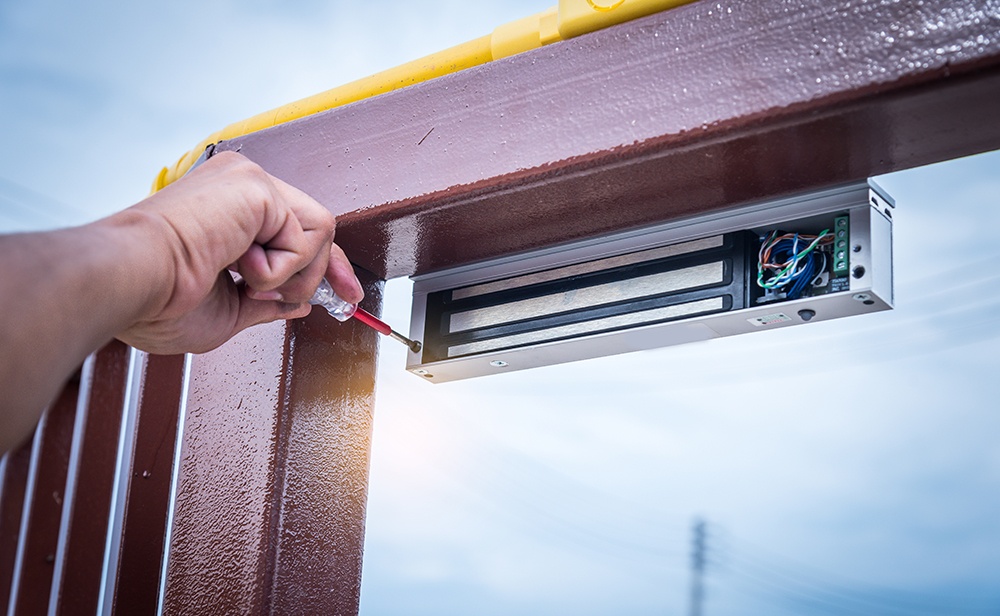New Magnetic Lock

If you are considering adding a maglock at your site, know that there are many Ontario and municipal building code requirements that must be completed before and after installation.
Stage 1: Plans and specifications prepared by an engineer or architect
Stage 2: Building permit
Stage 3: Electrical permit
Stage 4: Electrical installation for power supply
Stage 5: Installation of maglock
Stage 6: Installation of fire alarm pull station and connection to fire panel
Stage 7: Verification and documentation
Stage 8: Permit close out
Our extensive experience enables KR Communications Ltd. to assist you with navigating through the stages.
(See below for section 8.2 Door Access Control System requirements from the Long-Term Care Home Design Manual 2015)
Existing Maglock Replacement
As buildings age, equipment will inevitably fail. KR Communications Ltd. has access to several different maglock brands so that we can meet the style, shape and locking requirements.
KR Communications Ltd. can also make any required changes to your maglock system, by adding separate power supplies and a centralized key switch for overriding.
Our site visit for quotation preparation is free of charge so give us a call.
Simple, Easy, Effective!
Excerpt from V1.0 Long-Term Care Home Design Manual 2015
8.2 Door Access Control System Design Objectives
To provide a secure environment that ensures the safety of residents of the long-term care home. (Refer to the s. 9 of the Regulation)
Design Standards
8.2.1 All doors leading to non-resident areas must be equipped with locks to restrict unsupervised access to those areas by residents.
8.2.2 The door access control system must be designed so that it is on at all times.
8.2.3 All doors in the long-term care home leading to the outside, to non-long-term care resident areas, (including services areas such as the kitchen and laundry room, community space, retirement home, etc.), into stairwells, and on to open stairways, must be equipped with magnetic locks or similar devices, to prevent unauthorized entering or exiting from the home.
8.2.4 All doors must be provided with a back-up alarm system as an alert to staff in the event that a magnetic lock does not properly engage, therefore leaving the door(s) unlocked and unsupervised.
8.2.5 The back-up alarm should activate in approximately 10 seconds for doors that residents do not regularly access (for example doors into stairwells). For doors that residents will use, for example a main entrance door that automatically opens, the back-up alarm should activate in approximately 10-20 seconds. The delay prior to the door alarm activating allows staff and visitors where applicable, to go through the door without alerting other staff that the door has been opened
8.2.6 The back-up alarm must be connected to the back-up power supply.
8.2.7 The door access control system must be designed so that when an alarm is activated, the deactivation of the alarm can only occur at the source of the alarm.
8.2.8 If, under applicable law (e.g. the Fire Code), door closures are required on any door leading into resident areas (e.g., lounges, dining room, place of worship etc.) then the home must provide electronic “hold open” devices to ensure that residents have unobstructed access to resident areas.
8.2.9 The door access control system must be integrated with the resident/staff communication system (nurse call system).
8.2.10 Where elevators that are accessible to residents, open into non long-term care areas, (including but not limited to service areas, basements, co-located areas such as a retirement home, community space, etc.), controls must be placed in the elevator to restrict long-term care residents from accessing these spaces.